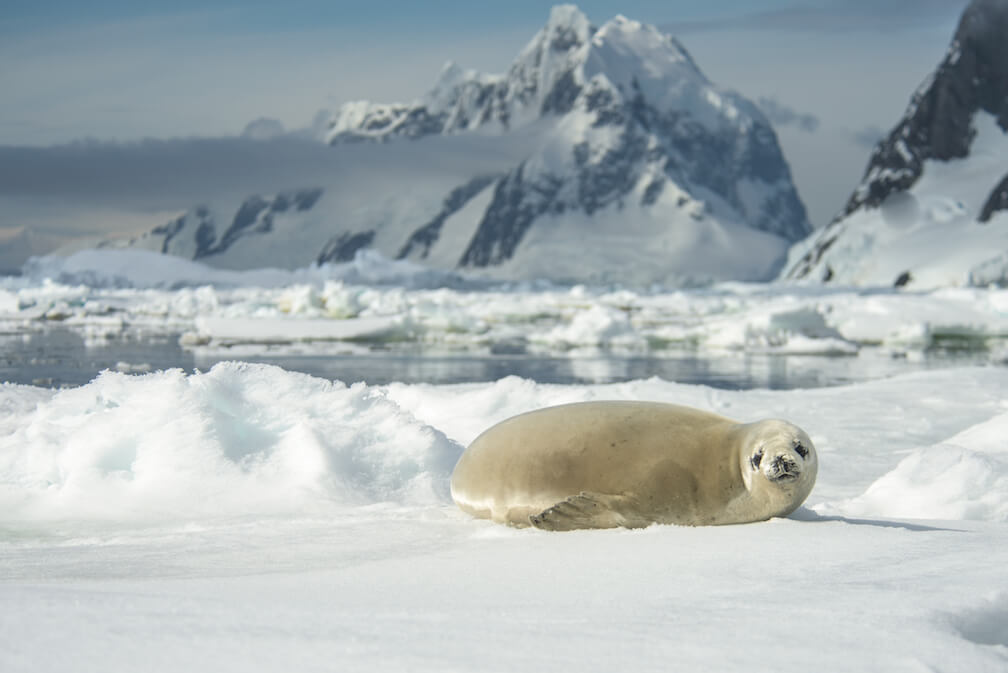By Albert Michaud
This winter, I had the chance to leave Quebec and go “down South”. Not to the Caribbean or Florida, but much farther afield: Antarctica, one of the last truly wild regions on the planet. I had the opportunity to work as a naturalist on board a cruise liner.
Antarctica is a huge continent nearly twice the size of Canada. This frozen continent is 98% covered by a polar ice cap measuring up to 4,000 m thick. The extreme temperatures found in Antarctica are attributable to the Antarctic Circumpolar Current, which prevents warm water currents from approaching the continent. The vastness of the continent makes it impossible to visit in its entirety, and the overwhelming majority of tourism is concentrated on the Antarctic Peninsula, which is the easiest region to access. From Ushuaia, Argentina, it takes 2 days on the high seas, braving one of the roughest oceans on the planet, to reach Terra Incognita. This region is therefore particularly inhospitable for life on land, but harbours some of the richest areas for marine life. What can be found in Antarctic waters?
From the moment we leave Ushuaia, the vessel is surrounded by dark dolphins “porpoising” in search of fish. Above our heads, albatrosses – enormous birds that roam the Southern Ocean – follow the boat until we reach the Antarctic Convergence, where in about 10 km water temperatures fall from 10°C to -1°C. This natural barrier, located around the 55thparallel, marks our entry into Antarctica. At that point, we still have 800 km to go before we make landfall. But already, we are lucky enough to see huge groups of humpbacks and fin whales that number over a hundred individuals.
The first traces of the continent appear in the form of a tabular iceberg. These giants, which can be tens of kilometres long and several hundred metres thick, are unique to the Southern Ocean and originate from the platforms of ice that surround a large part of the continent.
Seals Galore
As one approaches the ice, the attentive observer will discover a myriad of seals. Three seal species rely on the ice around the peninsula: the famous leopard seal and the lesser known crabeater seal and Weddell seal.
Often described as a great predator, the leopard seal eats more than just penguins. It is actually a generalist that feeds mainly on krill, but also penguins and even other seals, such as the crabeater and Weddell. It is the species’ excellent adaptability and non-specialization that allow it to survive the harsh conditions of Antarctica.
The crabeater seal is a specialist whose diet is over 95% krill. It does not eat crabs, as its name would suggest. The name comes from an error made by the first naturalists that described it: its pinkish feces suggested that it fed on crabs. As krill is incredibly abundant in the Southern Ocean, crabeater seals are also plentiful. In fact, they are one of the most abundant mammals on the planet, with an estimated population of between 15 and 75 million individuals. It is therefore almost impossible not to see these little animals during a stay in Antarctica.
But how can a seal with teeth eat krill? Imagine trying to filter tiny crustaceans with your teeth. Unlikely to work very well, right? Well, to get around this problem, the crabeater seal has developed a very specialized dentition that plays the same role as baleen in whales.
Last but not least is the tough-as-nails Weddell seal. It stays on the pack ice year round, even in the middle of winter. In order to have constant access to the surface, males maintain holes in the ice with their teeth. They use the holes not only to breathe, but also to attract partners: males with the best holes are more likely to attract a female. However, this strategy comes at a huge cost for males. Over the years, ice wears their teeth down until they disappear. Once it has lost its teeth, a male can no longer feed on its own and therefore starves to death.
The Weddell seal is also one of the greatest artists in Antarctica, capable of producing songs that seem to come from another planet!
This is a brief glimpse of what one might be likely to see during a trip to Antarctica. There are obviously many other species present in the waters, such as the Antarctic minke whale and different types of killer whales (I’ll come back to this later), and several other species of pinnipeds. The waters are simply teeming with life! Just thinking about it, I can’t wait to go back!















